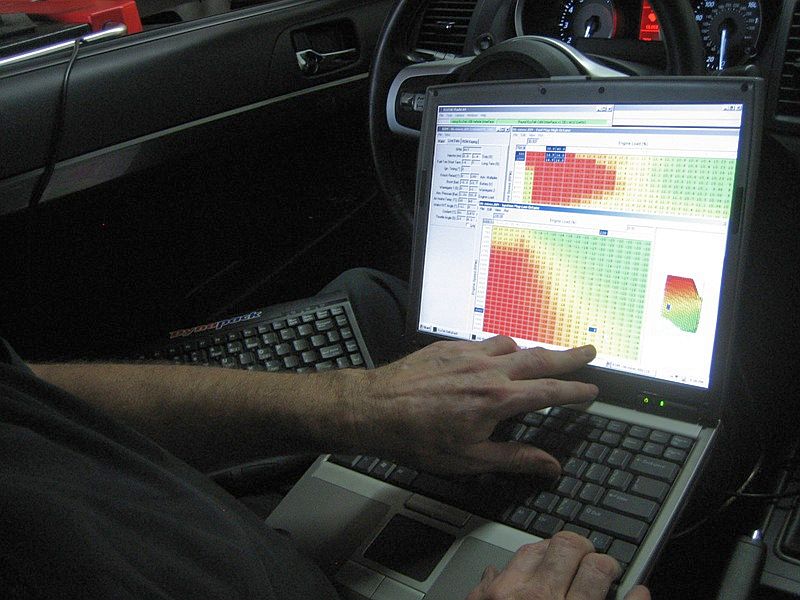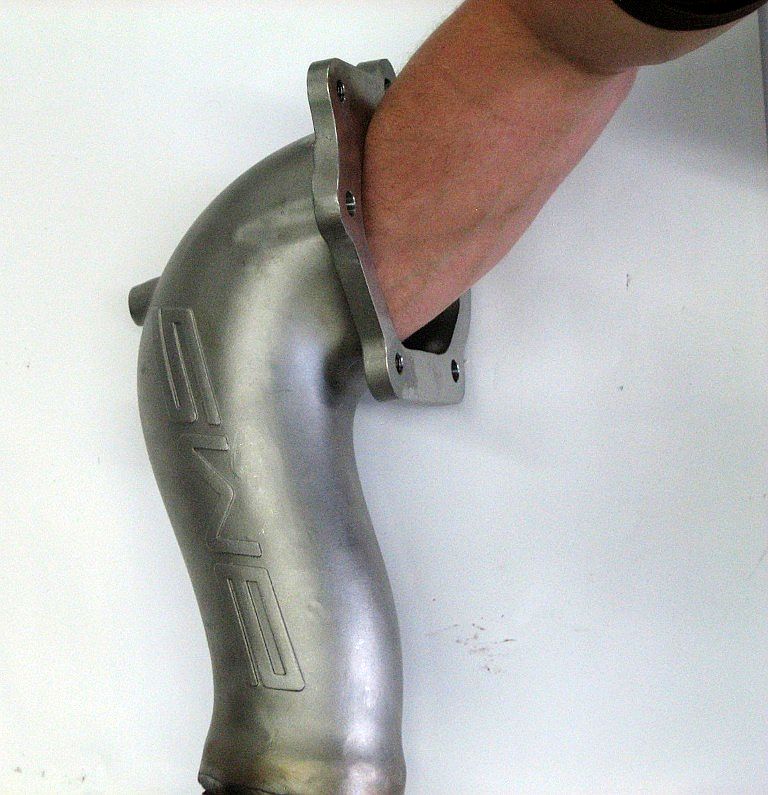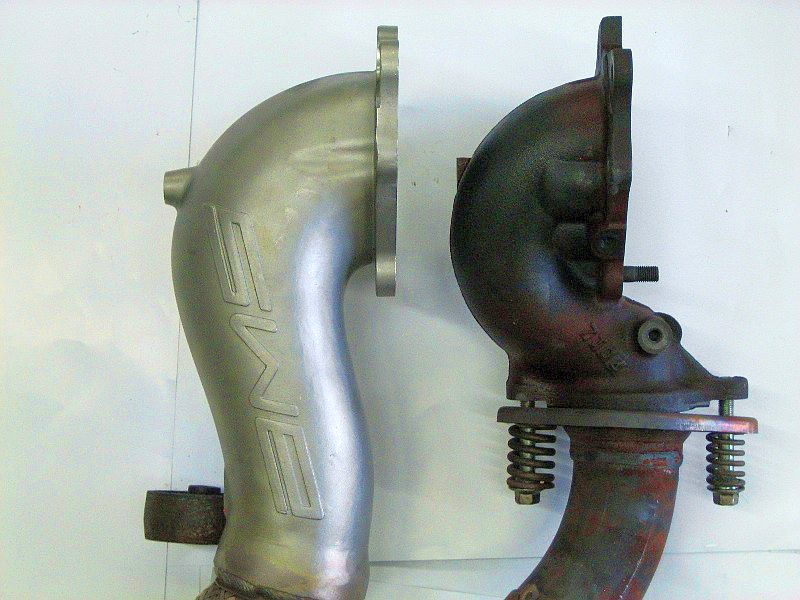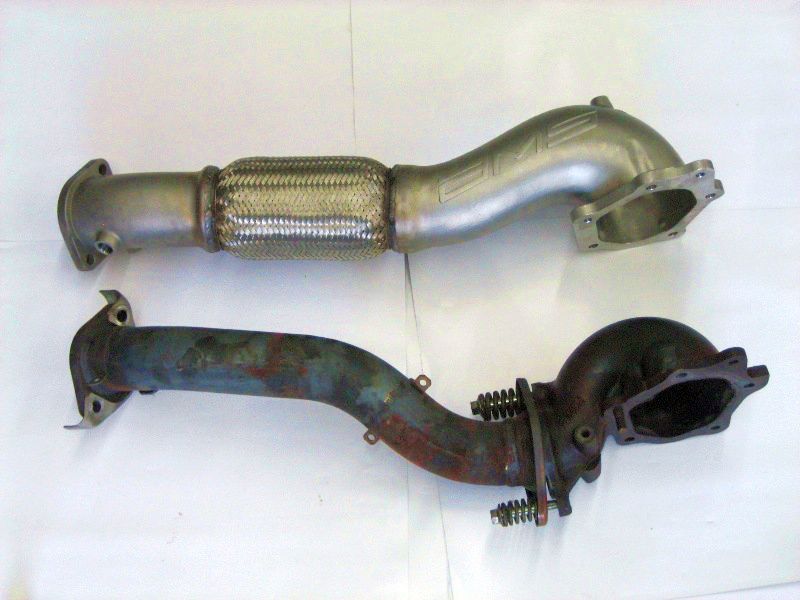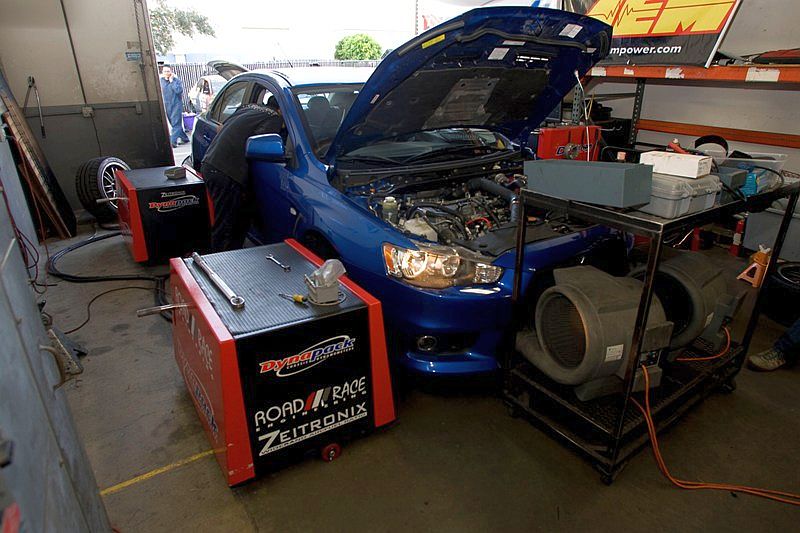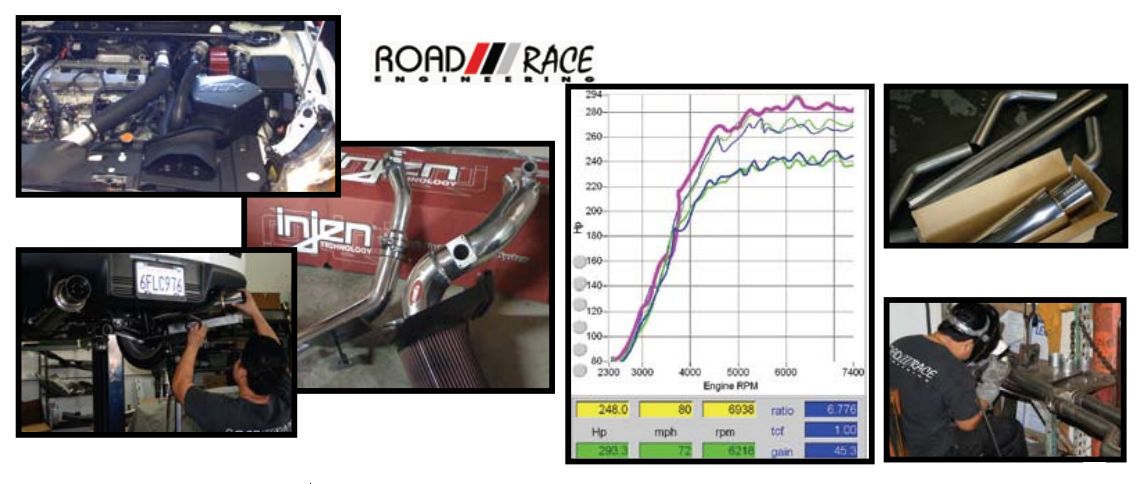Modified Magazine Project EVO X – Dyno Tuning Video
Modified Magazine put up a youtube video of the dyno session from when we did some dyno tuning on the RRE AWD Dynapack dyno…
Edmunds Inside Line – Track Battle: Our Project Mitsubishi Evo vs. Nissan GT-R
Mission Improbable
By Jason Kavanagh, Engineering Editor | Published Dec 21, 2009
“Beat the GT-R around Streets in the blue Evo. I still want to take my kids to bassoon practice with it, though. And you know how I hate getting my hands dirty. I’m an ‘arrive-and-drive’ kind of guy. Get it right or pack your stuff, Pal.”
With these words from Scott Oldham, IL‘s big enchilada, it was clear from the outset that Project Evo, our long-term 2008 Mitsubishi Evo GSR, wasn’t to be a one-string banjo. The boss wanted a fair fight.
A fair fight? Not the words you’d expect to hear when it comes to challenging a 2010 Nissan GT-R, one of the most comprehensively fast cars extant.
Truly Dual-Purpose
Streets of Willow Springs is a road course in the high desert of Southern California. It’s got a mix of corners, cambers and speeds. It’s technical. Every weekend…
Video and Read More:
http://www.insideline.com/mitsubishi/lancer-evolution/2008/project-evo-mission-improbable.html
Edmunds Inside Line – GT30R Hearts AMS Widemouth
2008 Mitsubishi Evo GSR: GT30R Hearts AMS Widemouth At RRE
By Jason Kavanagh | September 16, 2009
Once the turbo, clutch and injectors were installed in Project Evo X, Mike Welch of Road Race Engineering got to work on the dyno.
Let it be known right now that to make real power on 91 octane, regardless of the hardware involved, is a royal pain the rear. Mike had his work cut out for him before he even began.
Oh, and Mike raised the crazy up one more level. He filled our tank with 91 octane from 7-11. It’s madness, yet there is method to it–if he can make our car knock-free on this utter crap fuel, then it’ll be safe on any fuel we’ll ever fill the tank with.
On to the tuning, then. First he scaled the bigger ID1000 injectors in the ECU and roughed in a conservative calibration. From there he gradually tuned the car, adjusting those scaling parameters, changing intake and exhaust cam timing, boost pressure and ignition timing.
During and between runs Mike monitors more than just output. There’s knock activity, fuel trims, air-fuel ratio, coolant temperature, intake temperature, intercooler effectiveness… you could say that a tuner’s job is like juggling cats next to a running chainsaw. If one cat gets away from you…
…ask him to switch off the chainsaw.
Eventually, the car stopped making power and started becoming knock-sensitive. That’s usually the point where you’re done and need to back off a bit to have a safe calibration.
The problem is that at this point, it just wasn’t making much more power than it was with the stock turbo. Everything looked good otherwise (and we have a nice closed-loop idle with the ID1000s; no nonlinearities, and a relaxed 62% duty cycle at redline).
As for the power situation, long story short, our car still had the stock exhaust elbow and downpipe. And that was a problem.
This elbow is that part of the exhaust that connects the turbo’s turbine discharge to the cat. Stock, it’s a restrictive little thing. One theory is that Mitsubishi engineers had to make the elbow all kinked up to accomodate right hand-drive cars. Basically, to keep it away from the steering shaft that pokes down in that same region.
Whatever, the operating theory is that the stock downpipe was very likely choking off flow and introducing backpressure. To address this, AMS sent us a higher-flowing replacement they call a Widemouth Downpipe. It’s an apt name. Comparison between the AMS Widemouth and stock piece can be seen below. You could drop a baseball in one end and of the Widemouth it would drop out the other.
It beautifully made, too, comprising cast stainless segments with a generously-sized flex section to replace the stock spring/bolt arrangement.
Back on the dyno with the new downpipe–RRE mentioned that installing the Widemouth was a bit tricky due to the physically larger GT30R–Mike noticed an immediate benefit. The car was now less detonation-prone, so he was able to better exploit the higher-flowing nature of the GT30R. From about 4200 rpm to redline, the Widemouth allowed him to tune in an additional 25 hp… and that’s with running a bit less boost in the midrange, too.
So the lesson here is that matching components is critical when we’re talking about the kind of output this 2.0-liter engine is making while being fed The Worst Fuel On Earth.
This post is getting long-winded so I’ll post up a dyno chart of its final state of tune in a followup blog entry.
Jason Kavanagh, Engineering Editor @ 25,000 miles.
EDMUND’S Project EVO Part III – Dyno Tuning
2008 Mitsubishi Evo GSR: Tuning at Road Race Engineering

Edmunds Inside Line – GT30 Tuning
2008 Mitsubishi Evo GSR: RRE Tunes The Garrett GT30R
By Jason Kavanagh | September 17, 2009
Some tuners use ECUFlash. Others swear by EcuTek. Mike Welch of Road Race Engineering, on the other hand, doesn’t play favorites.
While Project Evo X, our long-term 2008 Mitsubishi GSR, was in his care, Mike constantly switched between the two calibration interfaces while on the dyno. It turns out that certain functionality and datalogging can only be accessed through the EcuTek interface, while other tables are better served by ECUFlash. An ECUtek license costs real money, though, and uploading changes to the ROM takes several minutes instead of seconds. So he uses both. These are the tricks you learn when you’ve been modifying Mitsubishis since 1994.
After adjusting the calibration on the dyno until he was satisifed it was producing safe and consistent power, checking the vitals on the street and making subtle tweaks, he was done tuning Project Evo X with the Garrett GT30R turbo.
The rest of the story and Dyno Charts on Edmunds blog
EDMUND’S Project EVO X [Part 1]

To find out just how much power Project Evo, our Long-Term 2008 Evo GSR, currently generates, we went to someone who knows these cars.
To find out just how much power Project Evo, our Long-Term 2008 Evo GSR, currently generates, we went to someone who knows these cars.
Road Race Engineering has been working on Evos since before they were sold in the USA. And they’ve been building, racing, tuning, modifying and repairing 4G63s since 1994. You could say they know a thing or two hundred about how to make Mitsubishis go fast.
In Road Race Engineering’s huge 6,000 square foot facility in Santa Fe Springs, CA, they got to work. Project Evo’s wheels came off and the four Dynapack hub dynos were carefully bolted on.
Then we fired the engine, warmed it up to operating temperature by “driving” at light load and did a few pulls.
Now, before we go any further, it’s important to remember that not all dynos are created equal. Comparing results from different dynos is a fruitless and deceptive exercise. Even if you test the same car on two different dynos on the same day, the results can be all over the map.
In fact, we’ve already done that exercise with a GT-R.
Since you just clicked that link and re-read the test, you know only to compare results from Road Race Engineering’s Dynapack dyno to other runs made on that dyno. A dyno is a tuning tool, not a manhood-measuring device. Focus on the gains rather than the absolute numbers.
Whew, okay. Back to Project Evo’s baselining exercise.

We did four or five pulls and the peak numbers were about 320 lb-ft and 325 horsepower. I say “about” because the run-to-run variation floated a few hp or lb-ft higher or lower than these values. I’ll post a representative dyno chart once my latptop starts cooperating.
Mike Welch, owner of Road Race Engineering, says that bone-stock Evo Xs typically generate about 250 horsepower on this dyno.
Factor in your favorite guesstimate for drivetrain loss based on all of this and we can see that we’re roughly 65 horsepower shy of our power goal for Project Evo.
So, now what? With a decent complement of bolt-ons, the next logical step is cams. We talked with our friends at Cosworth in Torrance and they handed us a set of Cosworth MX1 cams, which Road Race Engineering graciously volunteered to install and re-tune for.
More to come.
Jason Kavanagh, Engineering Editor @ 15,851 miles.*
*we drove two miles on the dyno.
Russ Taylor EVO 8 – Schooled Magazine
From Schooled Magazine September-October 2008 Issue
Over the next few issues, Schooled Magazine and Road Race Engineering (RRE) will take a stock 2008 Mitsubishi Lancer Evolution X and perform some serious modifications to show you what you can do to enhance your vehicle. This issue I hung out with the RRE crew as they modified the performance of the vehicle. By Russ Taylor
Intake Challenge
When choosing an intake system it is important to consider airflow. The more airflow the engine receives the better it will run. To find the best intake system for the Evo X, we wanted to compare three different systems to see what would give the best gain. With the three systems-the stock intake, Injen Cold Air and AEM Cold Air Intake- Schooled headed to Road Race Engineering (RRE) located in Santa Fe Springs, California to get the dyno results on which system would give the best performance gains. The dyno is a system that measures horsepower (WHP) of the vehicle.
I met up with Mike Welch, the master tuner at RRE, who has been tuning Mitsubishi vehicles for over 12 years. He was the perfect person to handle the intake challenge for the Evo X. We started with the dyno run to find the base numbers to compare against. The dyno placed 248 WHP with no modifications done to the vehicle with the stock intake system installed. Now that we had a baseline to judge by, we were then able to compare the two intake systems.
We started with the Injen (www.injen.com), and the results were depressing. There was only a 2 WHP gain. Considering that the unit retails at over $400, this was definitely not a very good bang for the buck.
We then tried the AEM intake (www.aempower.com) which increased the vehicle with a power gain of 26 WHP. With the cost of the intake at $285, this was a huge gain for a low price. AEM’s engineers took a different approach and designed a power-producing enclosed airbox. The airbox is constructed from cross-linked polythene. AEM’s revolutionary DRYFLOW synthetic performance air filter is the first cleanable, reusable performance air filter that does not require oiling to filter and trap dirt.
Even though the Injen unit looks considerably nicer with polished pipes than the AEM intake, the 26 WHP gains made our choice obvious- to go with AEM for the project.
Custom Fabricated Exhaust by RRE
To help with the airflow for the vehicle, RRE made a custom fabricated exhaust system. Art Thavilyaei, one of the RRE crew, pieced together what later would become a custom fabricated dual exhaust system.
RRE decided to use 3” piping going into dual 2.5” piping for the rear section, and the process was amazing to watch. They start by removing the stock exhaust system. A jig is used to hold the new piping in place as measurements are taken and airflow is considered. Once each piece is measured, it is then cut, ground, and welded in place with the use of the jig. Each bend and weld in the exhaust system potentially decreases the amount of airflow from the engine. Art took his time to ensure that the end product would produce the greatest amount of airflow from the vehicle.
After several labor-intensive hours, Art finished with the placement of the exhaust system only to have to remove the entire exhaust to perform the finishing welds. He completed the welds to perfection, and he placed the finished exhaust on the EVO X. Mike ran the car on the dyno and saw a 17 WHP gain over the stock exhaust. The total cost for the exhaust system like this from RRE is $650. It gives the vehicle solid power gains and sounds a lot nicer.
With the AEM Cold Air Intake and the custom fabricated exhaust by RRE, we saw a total 45 WHP increase on the vehicle. “The best bang for the buck is the intake and exhaust,” says Mike. With a total of 45 WHP gain, Schooled Magazine would have to agree.
In the next issue Mike will perform a custom tune and will add some additional performance parts to get the most gains possible out of the Evo X. You don’t want to miss the next issue of Schooled!



